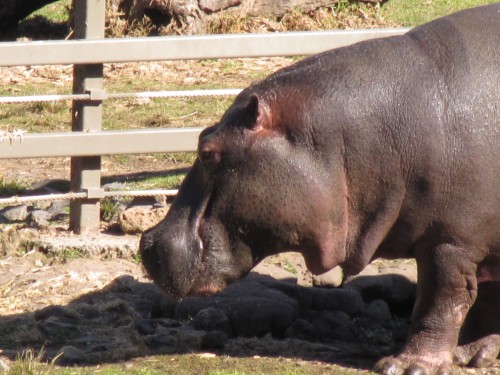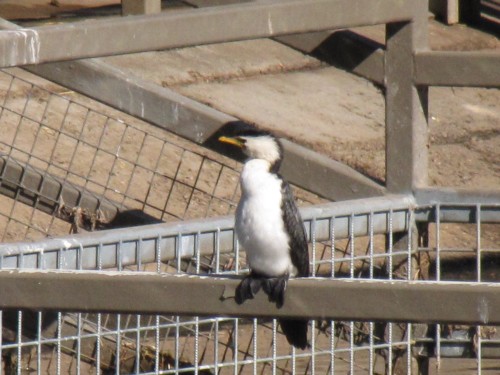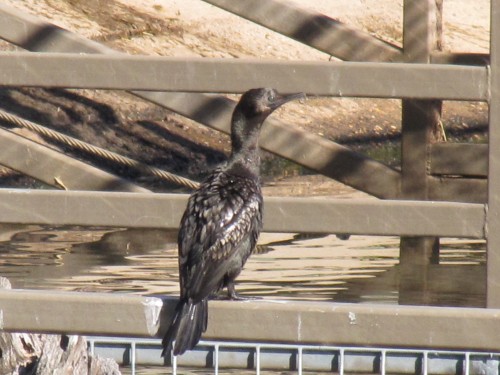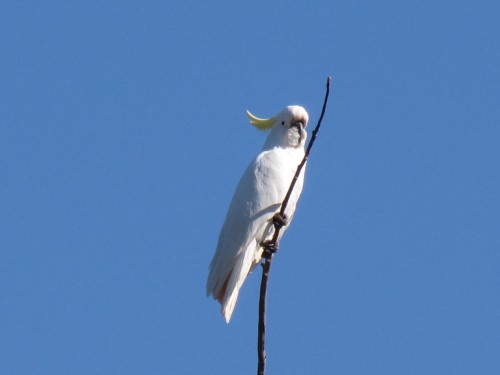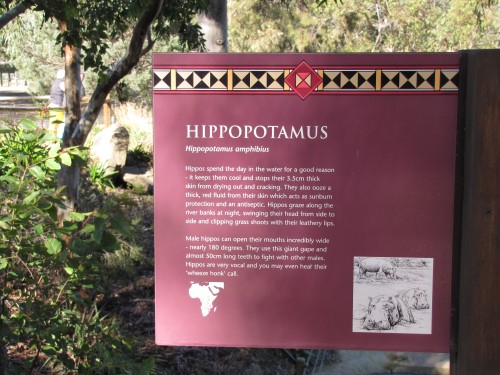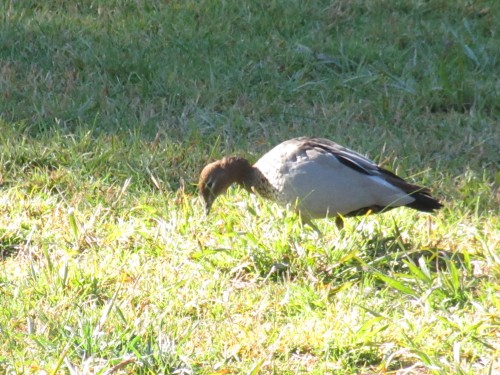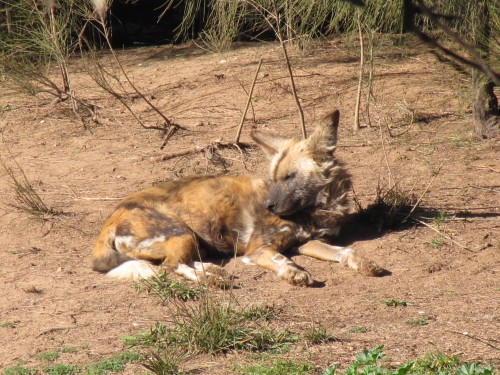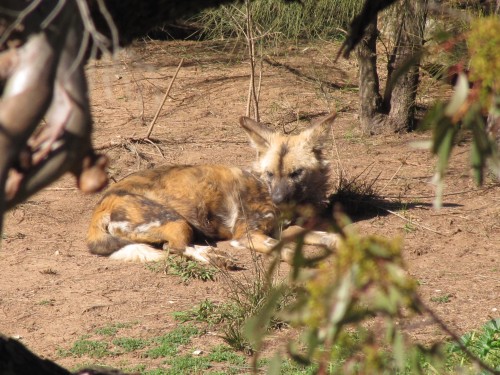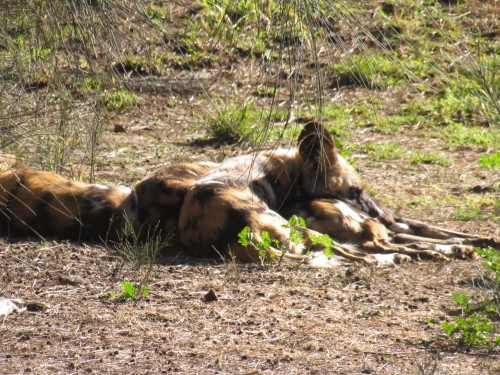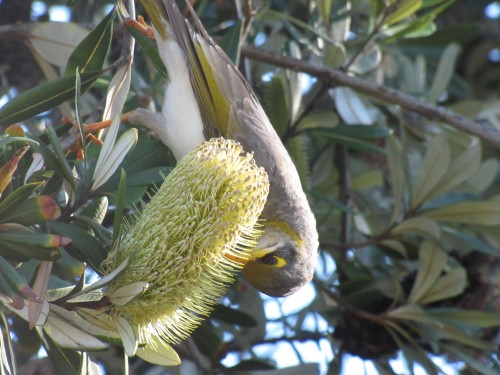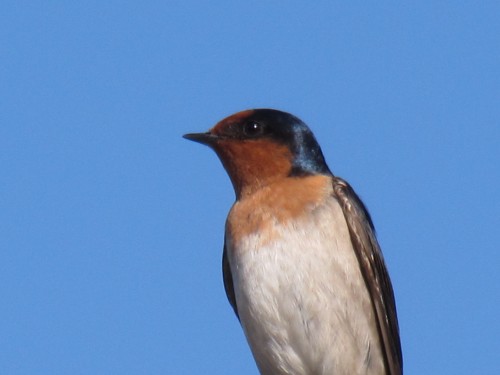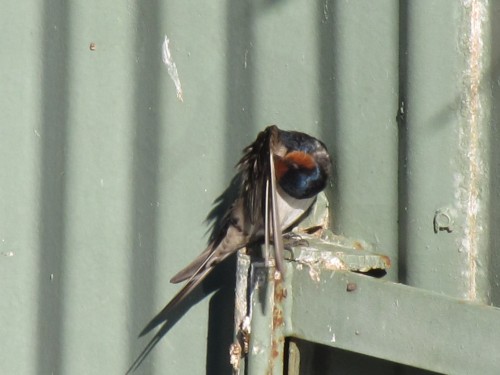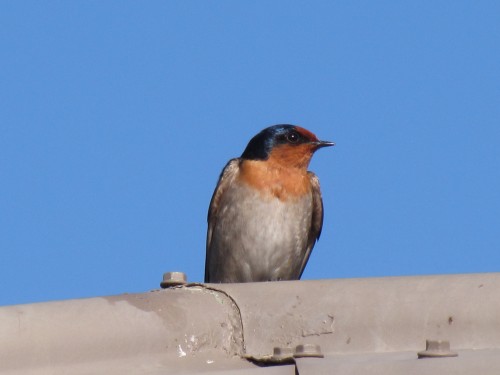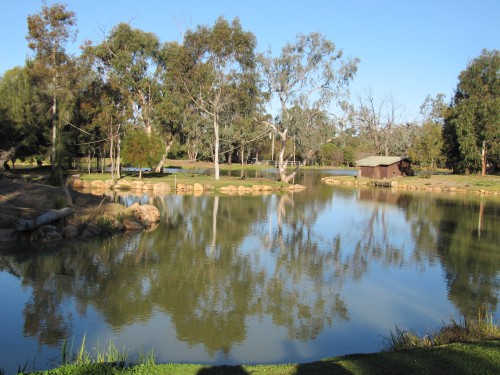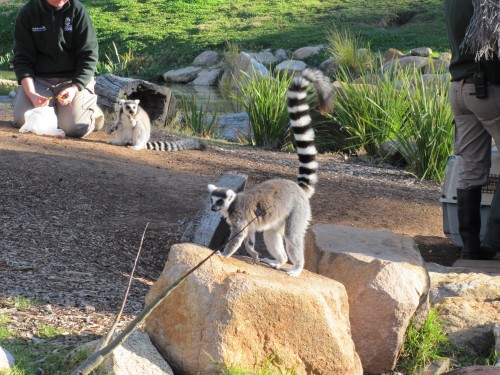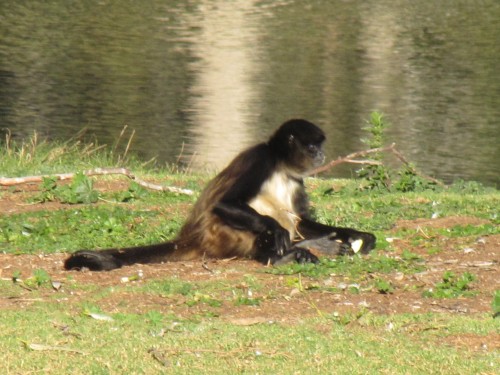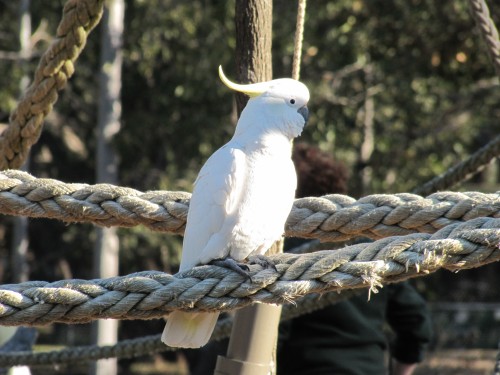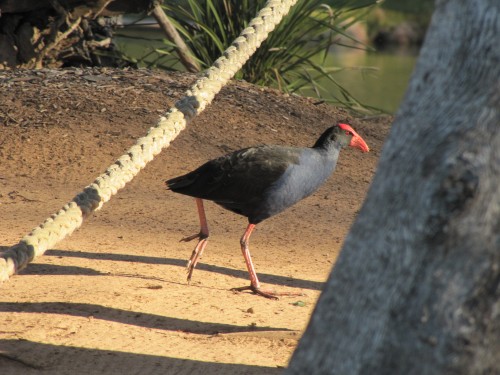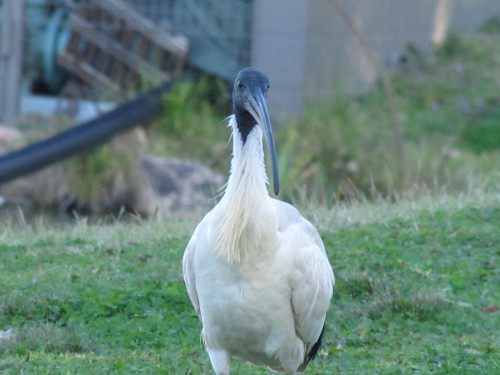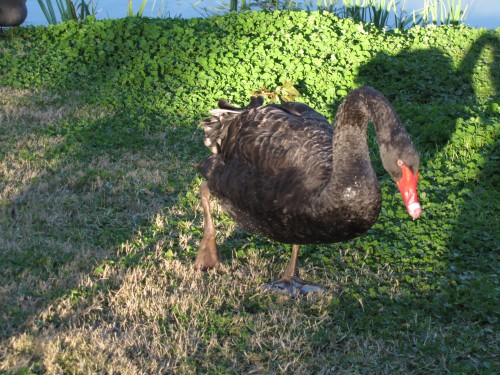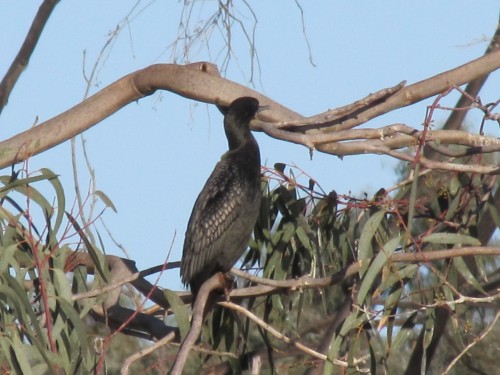Birds of the hippo enclosure
I think that the hippopotamus is a fascinating animal, but I will resist the temptation to write about it. After all, this site is about Australian birds, so… here we go.
The hippo enclosure a the Western Plains Zoo near Dubbo in New South Wales is a huge one – much larger than enclosures you will see in most zoos. It gives the animals plenty of room to move and live in a more natural environment than would otherwise be the case in captivity. As a part of this provision, the hippos in this zoo have a large water feature to enjoy – it’s really a small lake and they must feel really at home.
Being a water feature, it naturally attracts water loving birds. Two which were hard to overlook were the Little Pied Cormorant and the Little Black Cormorant, both shown in photos below. I’m not sure how many fish they would find in the murky water of the hippo lake, but there they were.
As we were watching the cormorants and the hippos I noticed a Sulphur-crested Cockatoo perched high in the branches of a nearby tree. I’m not sure if the cockatoo was checking out the availability of water from the hippo lake, or looking for a hollow to make a nest. Perhaps it was on guard, ready to warn the flock feeding on the ground of approaching danger.
Watch your back, duck
I was amazed at the danger this Australian Wood Duck had placed itself into. It was quietly grazing on the grass in the African Wild Dog enclosure at the Western Plains Zoo in Dubbo, and with its back to the pack sunning themselves about 30 metres away. They are cunning hunters and quite capable of sneaking up on an unsuspecting, tasty meal like a duck. I guess that they are well fed and have no need to chase after wildfowl, or any other birds which stray into their enclosure.
This reminded me of a guided tour we had a some years ago through our local Monarto Zoo, just 10km from my home here in Murray Bridge. The tour bus was slowly moving through the cheetah enclosure when the guide announced that the cheetahs loved running at full speed and catching the local ravens or magpies before they could get airborne again.
I decided then that I would never try to outrun a cheetah!
Time for a sweet break
The various species of banksias are often well favoured by our native birds and especially our many honeyeater species. Banksias are often bushes or small trees with dense foliage, ideal for many of our smaller birds like finches, thornbills and the like because the leaves provide shelter from predators such as hawks and eagles. The dense leaf cover also provides ideal protection for nesting sites.
Banksias are also good producers of nectar in their many large flowers. The flower shown in the photo above is on the smaller side; many are much bigger. The Yellow-throated Miner, one of the many honeyeater species in Australia, obviously loves this one. The photo was taken in the grounds of the Western Plains Zoo in Dubbo, New South Wales.
Welcome Swallows everywhere
In our extensive travels in South Australia, Victoria and New South Wales in recent years I have often observed Welcome Swallows. They are a widespread and very common species throughout their range in eastern, southern and parts of western Australia. In recent months I have often seen a dozen or more flying above our garden, indeed, more often than in many previous years.
Not often, however, have I had the opportunity to photograph them up close. They don’t sit still very often, preferring to keep flying and feeding on any flying insects there might be around. More than once I have hoped for a pair to set up home under our veranda where it would be easier to get photos. They had different ideas, of course.
It was with delight then, during our visit to the Western Plains Zoo in Dubbo a few weeks ago, that one of many swallows flying around decided to settle for a few moments on the edge of the African Wild Dog enclosure. Just a few metres from me. Well within easy camera range. Too easy.
After a few minutes it flew off and another one came in to rest, this time a little lower on the fence. This one decided that the early morning sunshine on such a cold morning was just what it needed to be doing a little feather preening.
By the way, the fence formed the enclosure for the African Wild Dogs (see photo below).
Birds and animals – Western Plains Zoo
After leaving Sydney and our family with some sense of sadness – the grandchildren wanted us to stay – we travelled to Dubbo. As we entered the rural city we unfortunately had a little bingle in our near new car. Trying to negotiate a round-about I side-swiped another car. I must admit I was at fault; I was in the wrong lane. Happily no-one was hurt, just a little shaken, and both cars were still drivable. I exchanged details with the other driver for insurance claims and we were on our way again 20 minutes later. (Postscript: back home some weeks later the car looks like new again. Our local repairer did a great job.)
By the time we had settled into our cabin in the caravan park it was dark, so any bird watching in the area had to wait. We had a delightful dinner with cousins of my wife that evening, and next morning we gathered at the local crematorium for the funeral of a cousin. While it was a sad occasion, we were pleased to be able to catch up with so many of the family. After lunch together we had a few hours of daylight left, so we drove the short distance to the Western Plains Zoo on the southern edge of Dubbo. This zoo was set up many years ago as an adjunct of Taronga Zoo in Sydney. We had long desired to visit but this was our first opportunity.
We didn’t enter the zoo proper – just the picnic area near the entrance. There is no charge to visit this lawned area. The extensive picnic grounds look over an artificial lake (see top photo above). There are two islands in the lake, each one home to some animals. The closest caters for a family of Ring-tailed Lemurs (see photo above) while the other is home to a group of Black-handed Spider-monkeys (see photo below).
It was feeding time for the monkeys and lemurs, so we sat there in the calm, balmy evening light watching the animals on the islands. As we watched I was able to get a few photos of some of the local bird life, including the Sulphur-crested cockatoo (see photo below) who was obviously a regular visitor to the islands to benefit from any food scraps the animals might overlook. The ropes in the photo are actually there for the entertainment of the lemurs. They also make good perches for a cockatoo.
Just below the cockatoo was a Purple Swamphen, also on the lookout for a free handout. These two birds are wild birds which have come in to the zoo grounds because there is abundant food for the taking. Both probably also check out the picnic grounds for food scraps left behind by people visiting.
The Australian White Ibis (see below) is another species which takes over picnic grounds in search of an easy meal. This individual was alone at the time, but when the zoo is crowded it is probably joined by many more. On our visit the next day we saw large numbers of this species, some of them nesting in the grounds of the zoo (I will show photos of this on another post soon).
In some parks in many places in Australia, the White Ibis has become a serious pest species, harassing people having a quiet picnic by snatching food from them, even to the point of jumping on to a picnic table loaded with human food. Being 65 – 75cm (about 2 feet) in height they can be very intimidating to young children, especially if the children are walking around with food – an ice-cream for example.
Another bird which can be intimidating is the Black Swan (see photo below). This was the only individual we saw that evening, but it came towards where we were sitting in a very determined manner, then waddled up the bank and right up to about a metre from us. When we produced no food it started grazing on the abundant grass all around us. This is another species which is a pest in some parks and picnic grounds. Their beaks can give a nasty bite and their wings, if used, can give some unsuspecting person an nasty whack.
Don’t feed the birds
I’ve written on this topic many times before, but it is worth saying it again, just to educate new visitors to this site. PLEASE DO NOT FEED OUR NATIVE AUSTRALIAN BIRDS. Human food is actually dangerous and even deadly to many of our birds. Added to that risk is what is happening with birds like ducks, ibises and swans: they look to people for free handouts and very quickly become major pests.
If you want to encourage Australian native birds into your life – and into your garden – provide 3 or 4 or more bird baths for them. Plant Australian native plants so they have their natural food, places to shelter and sites for their nests. Read more about this topic here and here.
Of course there are many birds which do not bother people and just get on with their lives. One such species is the Great Cormorant shown below. It is just having a break from searching the lake for fish, frogs and tadpoles.
So this was our first taste of the zoo. We returned the next day for a whole day visit. Photos of the birds we saw – and a few animals too – in the coming days.
Stayed tuned.
